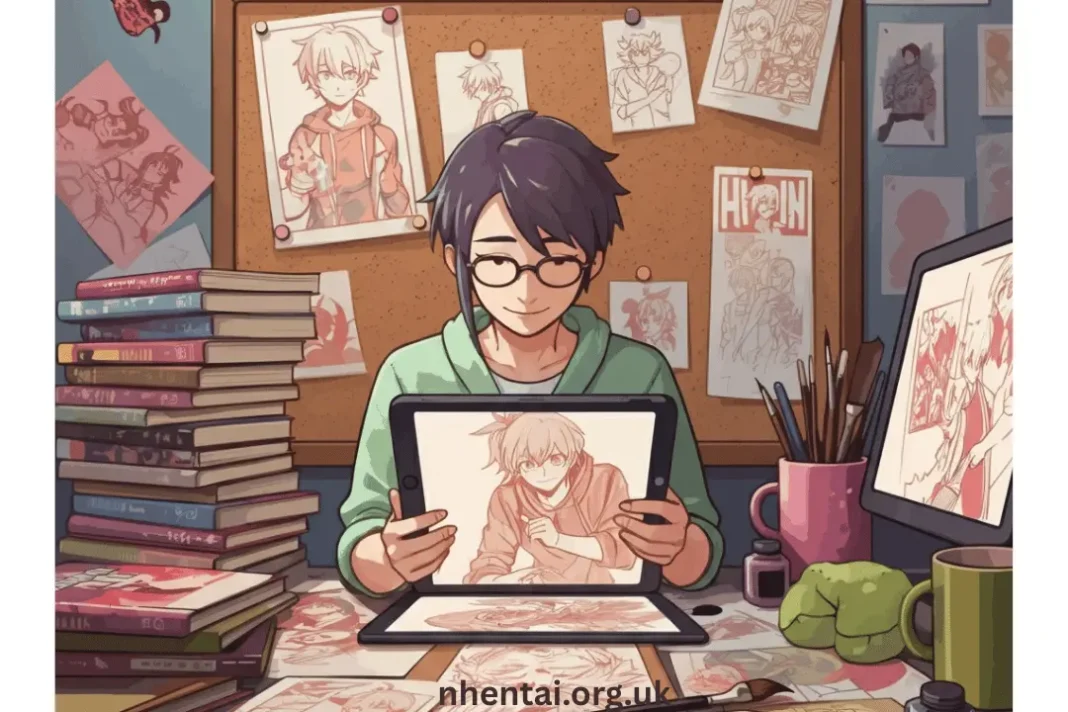Contents
- 1 Introduction: Understanding Doujin’s Cultural Foundation
- 2 The Creative Freedom of Independent Doujin Artists
- 3 Influence on Mainstream Trends and Industry Evolution
- 4 Challenges and Opportunities in the Doujin Landscape
- 5 Global Impact and Cultural Exchange
- 6 Conclusion: The Enduring Significance of Doujin Culture
Introduction: Understanding Doujin’s Cultural Foundation
In the vibrant landscape of Japanese pop culture, few creative mediums embody the spirit of independent expression quite like doujin. The term “doujin,” derived from “doujinshi” (同人誌), literally translates to “same person magazine” or “coterie magazine.” This grassroots publishing movement represents a cornerstone of Japanese creative culture, where amateur and semi-professional artists create and distribute self-published works that range from original stories to fan-based derivative content.
While doujin encompasses various genres and formats, its intersection with adult manga has proven particularly influential in shaping broader industry trends. These independent publications serve as creative laboratories where artists experiment with narrative techniques, artistic styles, and thematic elements that often find their way into mainstream commercial works. The cultural significance of doujin extends beyond mere entertainment—it represents a democratization of creative expression that challenges traditional publishing hierarchies and provides a platform for voices that might otherwise remain unheard.
The doujin ecosystem operates on principles fundamentally different from commercial manga production. Where mainstream publishers prioritize market research and established formulas, doujin creators enjoy the freedom to explore unconventional themes, artistic approaches, and storytelling methods. This creative liberty has established doujin as an incubator for innovation within the manga industry, particularly in adult-oriented content where mainstream publishers often exercise greater caution.
The Creative Freedom of Independent Doujin Artists
Independent doujin creators occupy a unique position within Japan’s creative landscape, operating with a level of artistic autonomy rarely found in commercial publishing. This freedom manifests in several key areas that collectively contribute to the medium’s innovative potential.
Creative autonomy stands as the most significant advantage for doujin artists. Unlike their commercial counterparts who must navigate editorial oversight, market considerations, and corporate guidelines, doujin creators answer primarily to their own artistic vision and their direct audience. This independence allows for experimentation with unconventional narrative structures, artistic techniques, and thematic explorations that might be deemed too risky for mainstream publication.
The iterative nature of doujin creation also fosters innovation. Many creators use doujin as a testing ground for ideas, characters, and artistic styles before potentially transitioning to commercial work. This experimental approach has led to the development of distinctive visual languages and storytelling techniques that later influence broader industry trends. The immediate feedback loop between creators and their audience at events like Comiket (Comic Market) provides valuable insights that can be rapidly incorporated into subsequent works.
Financial considerations, while challenging, also contribute to creative innovation. Working within limited budgets, doujin artists often develop creative solutions for production challenges, leading to innovative artistic techniques and efficient storytelling methods. These resource constraints, paradoxically, can spark creativity by forcing artists to find novel ways to achieve their vision within practical limitations.
The personal connection between doujin creators and their audience creates a feedback ecosystem that differs markedly from commercial publishing. This direct relationship allows for more nuanced understanding of audience preferences and enables creators to develop highly targeted content that resonates deeply with specific communities. This intimate creator-audience relationship often results in more authentic and emotionally resonant works.
Influence on Mainstream Trends and Industry Evolution
The relationship between doujin and mainstream hentai manga represents a fascinating example of how grassroots creativity influences commercial entertainment. Many trends, tropes, and artistic innovations that later become staples of commercial adult manga originate in the doujin sphere, demonstrating the medium’s role as a cultural trendsetter.
Character archetypes that have become ubiquitous in mainstream hentai manga often trace their origins to doujin works. The evolution of character designs, personality types, and relationship dynamics frequently begins in independent publications where creators have the freedom to develop these concepts without commercial constraints. Once these innovations prove popular within doujin communities, commercial publishers often adapt and refine them for broader audiences.
Visual storytelling techniques represent another area where doujin influence is particularly evident. Independent creators, working without the constraints of traditional publishing formats, often develop innovative panel layouts, artistic styles, and visual narrative techniques. These innovations, when successful, gradually influence mainstream artistic conventions and contribute to the evolution of manga as a visual medium.
Thematic exploration in doujin works often precedes mainstream adoption of similar themes. Independent creators, operating with greater creative freedom, frequently explore complex or unconventional themes that commercial publishers might initially avoid. When these explorations prove successful and resonate with audiences, they often pave the way for similar themes to appear in commercial works.
The feedback between doujin and mainstream publishing creates a dynamic ecosystem where innovation flows in multiple directions. While doujin creators often draw inspiration from existing commercial works, they also contribute original innovations that eventually influence the broader industry. This reciprocal relationship ensures continuous evolution and prevents stagnation within the medium.
Challenges and Opportunities in the Doujin Landscape
Despite its creative advantages, the doujin industry presents significant challenges that creators must navigate while pursuing their artistic vision. Understanding these obstacles provides insight into the resilience and dedication required to succeed in this unique creative space.
Distribution represents perhaps the most significant challenge facing doujin creators. Unlike commercial manga with established distribution networks, independent creators must develop their own channels to reach audiences. Traditional avenues include events like Comiket, specialized doujin shops, and increasingly, digital platforms. Each distribution method presents unique challenges, from the logistical complexity of event participation to the technical requirements of digital publishing.
Copyright considerations create a complex legal landscape for doujin creators, particularly those working with derivative content based on existing commercial properties. While Japan’s copyright enforcement regarding doujin has traditionally been relatively lenient, creators must navigate potential legal risks while pursuing their creative goals. This uncertainty can influence creative decisions and limit certain types of expression.
Financial sustainability poses ongoing challenges for most doujin creators. The economics of small-scale publishing mean that few creators can support themselves solely through doujin sales. Most maintain other employment while pursuing doujin creation as a passion project, creating time management challenges that can limit creative output.
However, these challenges coexist with significant opportunities that continue to attract new creators to the medium. The rise of digital platforms has democratized both creation and distribution, reducing barriers to entry and expanding potential audiences beyond geographical constraints. Social media and online communities have created new ways for creators to connect with fans and build sustainable audiences for their work.
The global expansion of interest in Japanese pop culture has created new market opportunities for doujin creators. International audiences, increasingly accessible through digital platforms, represent growing markets for doujin content. This globalization has also led to cross-cultural creative exchanges that enrich the medium’s artistic diversity.
Global Impact and Cultural Exchange
The international expansion of doujin culture represents one of the most significant developments in contemporary manga history. What began as a distinctly Japanese phenomenon has evolved into a global creative movement that influences artistic expression worldwide while maintaining its essential characteristics.
Digital distribution platforms have been instrumental in this globalization, allowing international audiences to access doujin works that were previously limited to Japanese events and specialty shops. This accessibility has introduced global audiences to the unique creative approaches and thematic explorations characteristic of doujin, fostering appreciation for the medium’s artistic value beyond its entertainment function.
The influence of doujin culture has extended beyond passive consumption to active participation. International creators, inspired by doujin principles of creative freedom and community-based distribution, have developed their own independent publishing networks. These international doujin communities, while adapting the medium to local cultural contexts, maintain the essential spirit of creative independence that defines the original Japanese movement.
Cross-cultural creative exchange has enriched doujin content, introducing new artistic influences, storytelling approaches, and thematic considerations that reflect diverse global perspectives. This international dialogue has contributed to the medium’s continued evolution while preserving its core identity as a platform for independent creative expression.
The academic and cultural recognition of doujin as a legitimate form of artistic expression has grown significantly in recent years. Scholars, cultural critics, and art institutions increasingly acknowledge doujin’s contribution to contemporary visual culture, elevating its status from niche hobby to recognized cultural phenomenon.
Conclusion: The Enduring Significance of Doujin Culture
The exploration of doujin’s influence on hentai manga trends reveals a complex ecosystem where independent creativity drives industry innovation and cultural evolution. Far from being merely derivative or supplementary to commercial publishing, doujin represents a vital creative force that continuously pushes artistic boundaries and explores new possibilities for visual storytelling.
The relationship between doujin creators and mainstream publishing demonstrates the value of maintaining spaces for creative experimentation outside commercial constraints. These independent creators serve as cultural pioneers, developing innovations that eventually enrich the broader manga landscape while preserving the authentic voice that emerges from genuine creative passion.
As digital technologies continue to evolve and global cultural exchange accelerates, doujin culture’s influence will likely expand further. The principles that define doujin—creative freedom, community engagement, and innovative expression—remain relevant across cultural boundaries and technological platforms. These values ensure that doujin will continue serving as both a creative laboratory and a cultural bridge, connecting diverse audiences through shared appreciation for artistic innovation and authentic expression.
The broader cultural implications of doujin extend beyond entertainment to questions of artistic freedom, cultural democratization, and the role of independent creativity in commercial industries. By maintaining vibrant independent creative communities, cultures preserve essential spaces for innovation and authentic expression that ultimately benefit entire creative ecosystems.
Understanding doujin’s influence on hentai manga trends provides valuable insights into how grassroots creativity shapes commercial entertainment, demonstrating that authentic artistic innovation often emerges from the passionate dedication of independent creators rather than corporate boardrooms. This dynamic ensures the continued vitality and evolution of manga as both an art form and a cultural phenomenon.
You may also read: Is Nhentai Down? Checking Status and Common Fixes
For more info visit Nhentai


